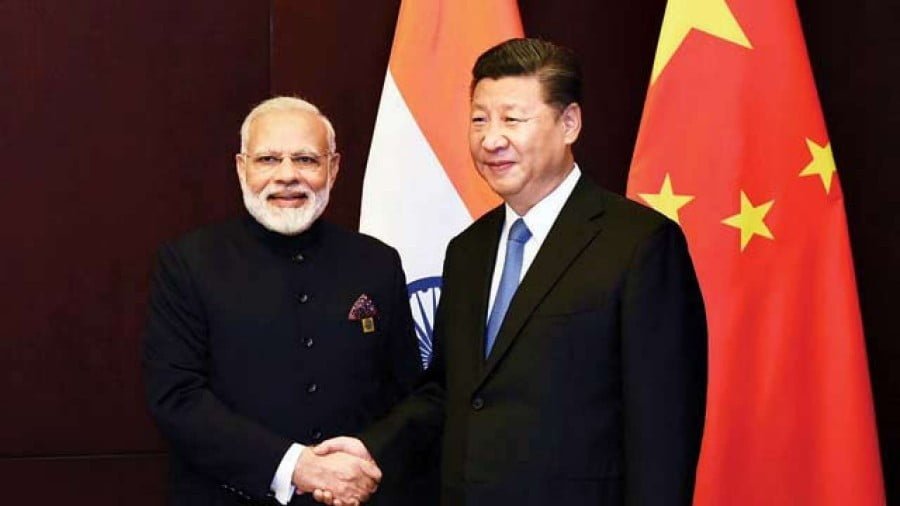US Eyes India as Junior Partner in Afghan War
The regional tour of Pakistan and Afghanistan earlier this week by a «bipartisan» delegation of United States Senators gives some clues about the Trump administration’s strategy in Afghanistan which is expected to be unveiled by the middle of the month.
There have been contradictory statements made by the leader of the delegation, Senator John McCain, who heads the powerful Senate Armed Services Committee keeping legislative oversight of US military affairs. But then, the fog of war is deepening.
While in Islamabad, McCain said that the US’ engagement with Pakistan is «important», and that «we (US) will not have peace in the region without Pakistan».
As he left a meeting with Pakistan’s top foreign-policy official Sartaj Aziz and army chief General Qamar Javed Bajwa, McCain added, «Our (US-Pakistani) relationship is more important perhaps than ever before».
But the very next day from Kabul, McCain threatened Pakistan. He warned that much as Washington was counting on Islamabad’s support to eliminate militancy, if that support is not forthcoming, it will face the US’ wrath.
«We made it very clear that we expect they (Pakistan) will cooperate with us, particularly against the Haqqani network and against terrorist organisations. If they don’t change their behaviour maybe we should change our behaviour towards Pakistan as a nation», McCain said.
An Afghan government statement issued after the senators’ meeting with President Ashraf Ghani in Kabul said, «The Senators said that head of Pakistan’s armed forces General Qamar Javed Bajwa has agreed to joint operations against terrorist groups in the border region. They said that the US would provide monitoring and verification of these operations». Ghani reportedly said he «agrees with the proposal».
But, curiously, Pakistani military’s statement on the meeting between Gen. Bajwa and the senators made no reference to any such proposal.
While in Pakistan, McCain said that getting major areas of the country under government control, keeping the Taliban from urban centres and working toward a cease-fire with the insurgents would be like winning the war. «It will probably be a simmering crisis for many years to come. … They (Taliban) are not going to negotiate unless they think they are losing. … So, we need to win and have the advantage on the battlefield and then enter into serious negotiations to resolve the conflict».
But he raised the bar much higher after reaching Kabul. McCain’s punch line: «The strongest nation on Earth should be able to win this conflict, and we are developing the strategy to do that».
It may seem a curious logic, historically speaking. But, it probably explains the logic of the «strategy» the Pentagon is finessing. Fundamentally, the strategy aims at packaging the US’ open-ended military presence in Afghanistan.
There are a growing number of voices in the US – military and civilians, Republicans and Democrats alike – who call for a new and aggressive strategy in Afghanistan.
Typically, Leon Panetta, Defence Secretary in the Obama administration said last week that the US must bring stability to Afghanistan, even if that means recommitting large numbers of air and ground forces and keeping a presence there indefinitely.
The former CIA chief General David Petraeus also spoke on similar lines, saying he’d expect the US to fight in Afghanistan for generations. Petraeus pointed out, «we’ve been in Korea for 65-plus years…»
Indeed, Defence Secretary James Mattis himself seemed to endorse the thinking when he said last week that the drawdown of US troops in Afghanistan «happened too rapidly» and the «political will is there to carry this (war) forward».
Suffice to say, the visit by the US senators to Islamabad does not mean that the Trump administration intends to work with Pakistan to stabilize the Afghan situation. All indications are that the US-Pakistan relations are touching an inflection point.
The mood in the US Congress has turned highly critical of Pakistan and a significant body of opinion favours the Trump administration adopting a tough line toward Islamabad.
Alongside, Trump administration hopes to co-opt India as its junior partner in the war against the Afghan insurgents, tapping into the longstanding rivalry between India and Pakistan.
Briefing the media during the recent visit (June 26) by Prime Minister Narendra Modi to US, Indian Foreign Secretary said that in terms of the policy discussion, «the over-arching theme was how India and USA were mutually supportive of each other in a changing world».
He said this had «many facets, the most obvious was the strategic convergence». He went to mention Afghanistan among topics on which Modi held «very detailed discussions and exchanges».
The Foreign Secretary hinted that the Trump administration is moving toward taking «action» against Pakistan and underscored that what India and the US have is «very much converging viewpoint of what is the problem» as regards Pakistan.
Last Thursday, four days after Modi’s visit to Washington (and just two days before the US senators arrived in Pakistan), the US Senate Armed Services Committee, which McCain heads, unanimously passed a resolution asking Pentagon to identify a larger role for India in Afghanistan so that New Delhi could provide increased and coordinated defence-related support to the war-torn country.
In fact, the resolution now forms part of the National Defence Authorisation Act (NDAA-2018), which approved USD 640 billion in critical defence spending for Fiscal Year 2018.
Without doubt, this stunning development reflects a shift in the US thinking insofar as the security and defence establishment in Washington all along remained sceptical about allowing an Indian role in the Afghan war, lest Pakistan took offence.
Clearly, the US policy is all set to take a U-turn. The US intention intends to pit India against Pakistan. During the recent visit to the US by Prime Minister Narendra Modi, Gen. Mattis had called on him.
A big section of the Indian security and defence policy community have been demanding that India should take a direct role in the Afghan war and even consider deploying military personnel to fight the Taliban insurgency.
In the overall foreign-policy matrix of the Modi government, aligning with the US in Afghanistan also advances its agenda to counter the growing influence of China in the region. The US too doesn’t seem to regard India’s newfound membership of the Shanghai Cooperation Organization to be consequential to regional security.
This is a «win-win» for the Trump administration, since the US is having a trying time motivating its NATO partners to deploy more troops to Afghanistan. The NATO defence ministers meeting in Brussels on June 29 revealed divergent opinions.
Some governments declined to offer more troops, including Canada which withdrew the last of its troops from Afghanistan in 2014. Fifteen of the 29 members pledged more troops, but with the caveat that they’ll confine themselves to non-combatant duties.
But the Pentagon hopes to inflict battlefield defeats on the Taliban and force them to the negotiating table without pre-conditions. It requires deploying combat troops.
This is where India may fit into the Pentagon’s strategy. The Indian Army has a welter of experience fighting insurgencies for decades not only within the country but also once overseas in Sri Lanka.
By Melkulangara Bhadrakumar
Source: Strategic Culture







